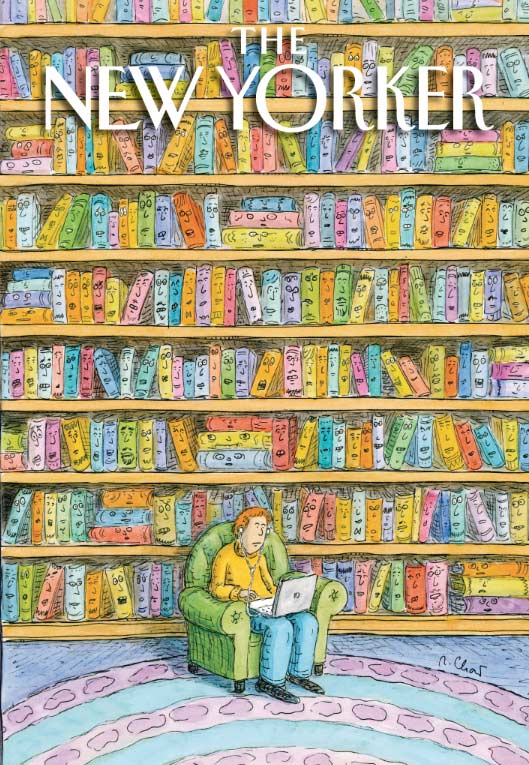October 2010 Archives
Med över 20 år på nacken är det inte mer än rimligt att den animerade gif:en (som nu upplever en renässans) får sina egna konstutställningar, som t.ex. förköttsligandet av den galna sajten dump.fm på ett galleri i Brooklyn.
På den där Growing Knowledge-utställningen jag nämnde finns en fysisk variant av Tweet-o-Meter installerad, mäter tweets/min./stad.


Lite mer Google-konst: Jenny Odells satellitcollage och Bill Guffeys Google Street View-oljor. Tidigare: gatuvyer som fotokonst.
Jag ska åka till Japan nästa vecka - ett land på dekis, som det verkar:
But perhaps the most noticeable impact here has been Japan's crisis of confidence. Just two decades ago, this was a vibrant nation filled with energy and ambition, proud to the point of arrogance and eager to create a new economic order in Asia based on the yen. Today, those high-flying ambitions have been shelved, replaced by weariness and fear of the future, and an almost stifling air of resignation. Japan seems to have pulled into a shell, content to accept its slow fade from the global stage.
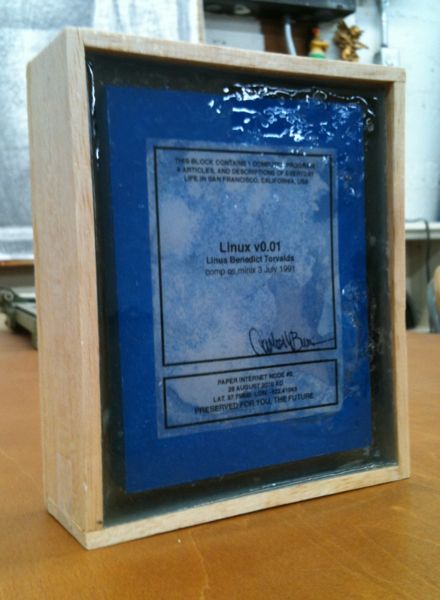
Carlos Bueno verkar jobba på Facebook, men det hindrar honom inte att skriva ihop en lite guide för hur man bäst bygger sig en egen "tidskapsel". (Att jobba på ett ställe som Facebook måste nog istället framkalla en viss ångest om man är det minsta intresserad av att bevara samtida kultur).
Syrafritt papper, nånting att bevara (exempelvis källkoden för Linux v. 0.1, som ovan), utskrivet med laserskrivare, lim, balsaträ (för att bygga lådan) och harts (för att så att säga "plasta in" artefakten, så att den håller i en 50 till 500 år). Men det viktigaste när man gräver ner sin tidskapsel är att man tar med information om var någonstans andra kapslar finns att hitta:
Inside each time capsule will be a list of other known capsules. That, I hope, will make the difference between a node in a network and a forgotten box of junk. Dozens or hundreds of people could build full-scale capsules like this and share location data with each other. This prototype and its twin are the only two of their kind so far, so they only link to each other. The larger the network, the greater the chances of recovery.
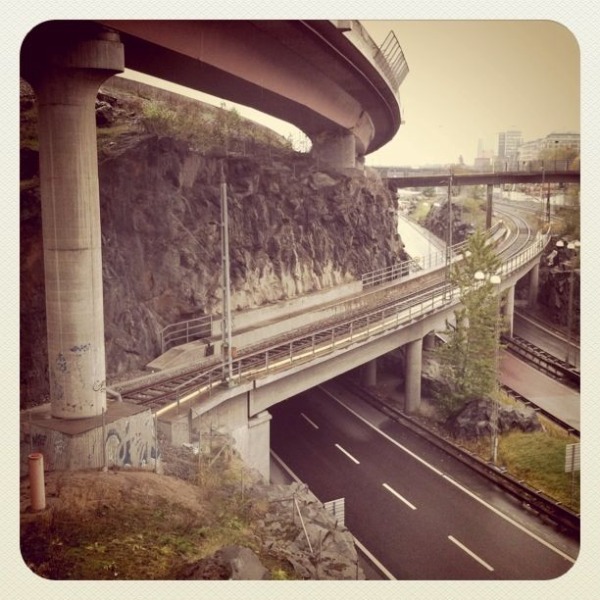
Jag läste häromdagen att fotografihistoriker har upptäckt att pionjären Joseph Nicéphore Niépce använde sig av en hittills helt okänd metod för att framkalla sina bilder, nämligen genom att "grädda" lavendelolja för att bilden skulle framträda. Jag har ingen aning om hur det faktiskt fungerar, men visst låter det vackert?
Nu för tiden är vi alla amatörpiktorialister förresten, ovan ett instagr.am-alster från tidigare idag.
Robert Krulwich (mannen bakom radioprogrammet Radiolab), som har en fin vetenskapsblogg hos amerikanska NPR, refererar författaren Chris Impeys favoritartnamn (ur boken How It Ends: From You to the Universe):
He found a beetle named Agra vation and another one called Agra phobia. (These are their real scientific names.)There is a pine tree called Pinus rigidus.There is a mollusk named Abra cadabra.He found an extinct rat-kangaroo called Wakiewakie.There is a spider genus called Orsonwelles...(named, of course for the actor/director) and this little lady you see here is called Orsonwelles falstaffius commemorating a movie Welles made called "Falstaff."But here's my favorite. It comes from a genus of snails called Bittium.There is a type of Bittium snail that tends to be smaller than the others. We don't have a photo, but I can imagine it well enough and it is called...ah, this is so wonderful.... Ittibittium.
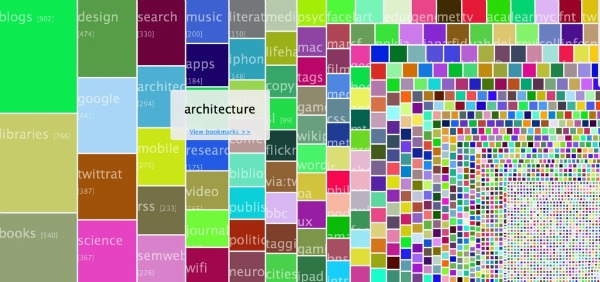
Jag hittade ett script som gjorde ett slags trädkarta över ens Delicious-etiketter.
Om du har vägarna förbi London kan jag nästan garantera att utställningen Growing Knowledge på British Library är värd ett besök. Man visar där upp "never-seen-before research tools, thought-provoking content and futuristic design in a fully interactive research environment".
Bland annat kan man för första gången på europeisk mark (den har i somras visats på SIGGRAPH-konferensen i USA) se Sonys RayModeler, en 360-graders 3D-prototyp som känns makalöst framtida. Se filmen nedan:
Jag noterat att Newspaper Club nu leverar till Sverige (något jag väntat på). Skulle man vilja trycka 100 exemplar kostar det 155 pund, inklusive leverans. Vill man ha färg kostar det 521 pund (inkl. leverans) för 300 exemplar (minsta möjliga).
En lite intressant kombination: Prousts enkät + Amazon Mechanical Turk = Mechanical Proust.
John Horton förklarar hur han betalar folk 3 cent för varje besvarad fråga, och postar svaren anonym, och automatiskt, till bloggen.
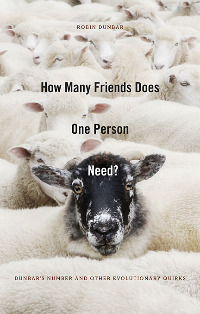 Robin Dunbar, apforskaren bakom det så kända numret, uppkallat efter honom själv, har en ny bok ute - How Many Friends Does One Person Need?: Dunbar's Number and Other Evolutionary Quirks. Jag tror han passar på att kapitalisera på internets intresse för hans teori, med tanke på att alla går runt och funderar på vad en "vän" egentligen är (en annan nyutkommen bok om det ämnet är förresten antropologen Daniel J. Hruschkas Friendship). Men det är OK.
Robin Dunbar, apforskaren bakom det så kända numret, uppkallat efter honom själv, har en ny bok ute - How Many Friends Does One Person Need?: Dunbar's Number and Other Evolutionary Quirks. Jag tror han passar på att kapitalisera på internets intresse för hans teori, med tanke på att alla går runt och funderar på vad en "vän" egentligen är (en annan nyutkommen bok om det ämnet är förresten antropologen Daniel J. Hruschkas Friendship). Men det är OK. Dunbar kom ju fram till att människor i genomsnitt kan ha 150 meningsfulla, stabila, sociala kontakter, baserat på hans studier av andra primater. Att människor klarar av ett socialt nätverk på mellan 100 och 230 personer extrapolerades från primaternas hjärnstorlek jämfört med människans.
Jag har inte läst boken, så ja kan inte säga om den innehåller något om huruvida digitala teknologier, kanske främst sociala nätverkstjänster à la Facebook, kan öka vår kognitiva förmåga att upprätthålla större cirklar av meningsfulla relationer.
(Boken verkar förvisso innehålla annat intressant, bl.a. svaret på frågorna om varför monogamister behöver större hjärnor och varför det lönar sig att köpa en ny kostym till anställningsintervjun).
Det finns så mycket intressant i Paolo Bacigalupis The Windup Girl (nämnd här tidigare), så pass att man skulle vilja skapa något i stil med The Gibsonian Institute bara för den här boken.

Robin Sloan påpekar träffande hur ens seende förändras efter att man har läst den:
Man börjar uppskatta den här typen av produkter, som kommer att fungera bra i ett post-fossila bränslen-samhälle:It's as if somebody got into my house, walked right up to a door I'd never noticed, opened it wide and led me through into the corridor beyond. Of course, I'm saying to myself. Why didn't I ever think to look here?

Förutom energiförsörjningen, så skulle man kunna fokusera på genetiken, eller på buddhismen, men framför allt, så klart, på maten. Sloan igen:
Forget Gattaca; genetic engineering's crazy excesses are going to hit us in the bodega, not the bedroom. And forget Skynet; the real apocalypse starts when all the fish die.
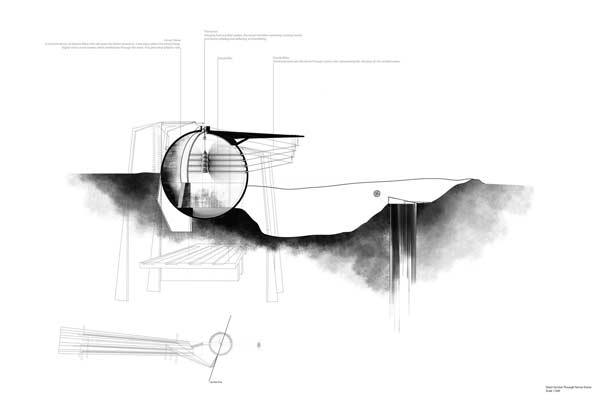
Near the fish-smelling Sudreyri, a village of 300 in the Wild North-West of Iceland, in a secluded fjord streaked with ashy glacier streams (from the nearby dying glacier of Drangajokull), lie the Ruins of Twitter. As opposed to the bone fossils, the Ruins are not a way to save data. They are a monument of the Death of The Internet. A cluster of sounds and infrasounds in an empty fjord, attracting whales and scattering cod. In the server dome, tweets are recited by a mechanical voice - in real time. The server hangs, creaking, from a pulley system, hovering over an interior salt water lake. The Dome's shape and the water help the acoustics. The Dome is streaked by ribs with a system of ossicles that vibrate in tune with the tweets. The vibrations are carried through the tensioned ossicle wires. They hit an ossicle wall enveloped in atomized icy water (a cold mist). The bony, sharp ossicles etch recordings of the tweets. Men and women, in search of lost tweets, huddle in the cold mist, with headphones and record needles. Digital archeologists in full gear index hundred year old tweets. The lower area of the ice library is slowly melting. Through canals dug in the heavy concrete base, the twitter streams form a data waterfall that opens towards the Arctic Ocean, in a whale-full bay.
Ett inlägg med rubriken "The Collected Emails of Stieg Larsson" får mig att tänka på hur trevligt det vore att ha ett Gmail-konto som innehåller Read Only-versioner av kända författares e-postkonversationer. Inte Larssons då kanske, men definitivt William Gibsons till exempel.
Jämförelsen mellan iPhone och 1700-talets amerikanska almanackor känns inte alls långsökt efter att ha läst Molly McCarthys artikel.
Innovatörer som George Washington och Thomas Jefferson tog almanackan till nästa nivå och gjorde den interaktiv:By now, I hope you'll forgive the ahistorical slip that led me to enlist the iPhone as a way of imagining just how resourceful an early almanac could be. It was so much more than a book. Comparing it to the iPhone helps expand our vision about how an almanac worked and what it could do for its buyers. It wasn't simply a compendium of reading material. Just as an iPhone connects users to an outside world and provides a feast of tools designed to make our lives easier, the almanac held the same promise. More than that, it was central to early American life and culture because it had so little competition. There was nothing at the local book shop that could do all the things the almanac did.
Not surprisingly, Washington turned to the annual edition of The Virginia Almanac for his diary. Aside from assigning a heading for his memoranda pages that read "Where & How my time is Spent," Washington's entries resembled those of most of his contemporaries, especially in the days before the Revolution when he was preoccupied with managing his large Virginia estate.In a typical glimpse, Washington recorded the first few days of July 1771 as follows:July 1. Rid into the Neck to my Harvest People, & back to Dinner. Mr. Robt. Rutherford came in the Afternoon & went away again.2. Rid to Harvest Field in the Neck & back to Dinner.3. Rid to the Harvest Field in the Neck by the Ferry & Muddy hole Plantations. In the Afternoon Mr. Jno. Smith of Westmoreland came here.4. At home all day with Mr. Smith. In the Afternoon Jno. Custis came.
Men vad förstörde den fina almanacks-kulturen? Reklamen!
But what may have doomed the almanac to the dungheap of American culture more than such competition was its exploitation by the patent medicine man. Advertisers found the almanac by the mid-nineteenth century the perfect vehicle for peddling their cures to the American public
Om nu någon person, en nytillsatt minister till exempel, behöver lite moraliskt och ideologiskt stöd för att starta en massiv digitaliseringskampanj för grundandet av ett Nationellt Digitalt Bibliotek, så kan han och/eller hon finns rätt bra stöd hos Robert Darnton, som skriver om ett bibliotek utan väggar hos New York Review of Books:
I propose that we dismiss the notion that a National Digital Library of America is far-fetched, and that we concentrate on the general goal of providing the American people with the kind of library they deserve, the kind that meets the needs of the twenty-first century. We can equip the smallest junior college in Alabama and the remotest high school in North Dakota with the greatest library the world has ever known. We can open that library to the rest of the world, exercising a kind of "soft power" that will increase respect for the United States worldwide. By creating a National Digital Library, we can make our fellow citizens active members of an international Republic of Letters, and we can strengthen the bonds of citizenship at home.
Om du vill fylla dina väggar hemma med ännu fler typografiska kartor kan du köpa några över Chicago och Boston från Axis Maps.


Man måste ge det till dom, Google. När dom ger sig på den svåraste av uppgifter: maskinöversättning av poesi. Än så länge finns det inte tillgängligt i Google Translate, möjligheten att bevara meter och rim i det man översätter, men man beskriver tekniken i ett papper (PDF) som presenteras på en konferens i dagarna:
In this work we demonstrate how modern-day statistical MT system can be constrained to search for translations obeying particular length, meter, and rhyming constraints, whether a single constraint, or any one of a set. We further demonstrate that the hypothesis space is often rich enough that these constraints can be satisfied. The impact on translation quality, however, is quite profound, as is to be expected. It seems that at the present state of machine translation, one does indeed have to choose betweengetting either the form or the meaning right. In the present form, however, we can already find good translations, as a sort of found poetry, by translating a large quantity of text, whether poetic or not.
Det här är det mest spännande jag hört om på länge: Open Bookmarks. James Bridle (nämnd nyligen för sin utgåva av Wikipedia-edits av Irak-kriget) har tagit tag i problemet med vad som händer med våra bokmärken, marginalanteckningar, läsdata, m.m., i e-böcker. Han formulerar det som att det handlar om att återuppliva bokens aura (i benjaminsk mening), att ta fasta på dess tidslighet, hur den gick från att vara ny till att bli använd och sliten - hur får en e-bok patina?
Nu finns inte så mycket detaljer än, men tanken verkar vara att skapa ett öppet sätt att dela bokmärken, i vid mening, över gränserna mellan olika leverantörer av e-böcker, mellan olika typer av hårdvara och mellan tjänster som samlar in sociala läsdata. Open Bookmarks kommer förmodligen inte vara lösningen på alla problem (frågan är om användarna av e-böcker och e-boks-prylar ens upplever det här som ett problem, än), men att nån bara bestämmer sig för att det ska lösas, i nån ände, är hedervärt.
I believe that the copy is no longer important, that we can all get the book, the text itself, if we need it. What is valuable and what is core and what we can lend to our friends and pass onto our children is not copies of books but originals of our own experiences, associated with those singular works of art.
Någon gång på 1600-talet satte sig vetenskapsmannen Robert Boyle ner och författade en lista med 24 problem som han hoppades att vetenskapen skulle lösa. En hel del av dom är redan lösta, t.ex. "The Recovery of Youth, or at least some of the Marks of it, as new Teeth, new Hair colour'd as in youth" (plastikkirurgi), eller "The practicable and certain way of finding Longitudes" (Google Earth). Det jag tycker att man lagt ner för lite tid på de senaste 300 åren? "A perpetuall Light".
Här är hela listan:
- The Prolongation of Life.
- The Recovery of Youth, or at least some of the Marks of it, as new Teeth, new Hair colour'd as in youth.
- The Art of Flying.
- The Art of Continuing long under water, and exercising functions freely there.
- The Cure of Wounds at a Distance.
- The Cure of Diseases at a distance or at least by Transplantation.
- The Attaining Gigantick Dimensions.
- The Emulating of Fish without Engines by Custome and Education only.
- The Acceleration of the Production of things out of Seed.
- The Transmutation of Metalls.
- The makeing of Glass Malleable.
- The Transmutation of Species in Mineralls, Animals, and Vegetables.
- The Liquid Alkaest and Other dissolving Menstruums.
- The making of Parabolicall and Hyperbolicall Glasses.
- The making Armor light and extremely hard.
- The practicable and certain way of finding Longitudes.
- The use of Pendulums at Sea and in Journeys, and the Application of it to watches.
- Potent Druggs to alter or Exalt Imagination, Waking, Memory, and other functions, and appease pain, procure innocent sleep, harmless dreams, etc.
- A Ship to saile with All Winds, and A Ship not to be Sunk.
- Freedom from Necessity of much Sleeping exemplify'd by the Operations of Tea and what happens in Mad-Men.
- Pleasing Dreams and physicall Exercises exemplify'd by the Egyptian Electuary and by the Fungus mentioned by the French Author.
- Great Strength and Agility of Body exemplify'd by that of Frantick Epileptick and Hystericall persons.
- A perpetuall Light.
- Varnishes perfumable by Rubbing
(via: Royal Society)
En artikel som förvisso beskriver läget inom systembiologi lanserar idéen om att hårbollen är vår tids biologiska über-symbol, snarare än den dubbla spiralen, skulle lika gärna kunna gälla mänsklig kultur i allmänhet.
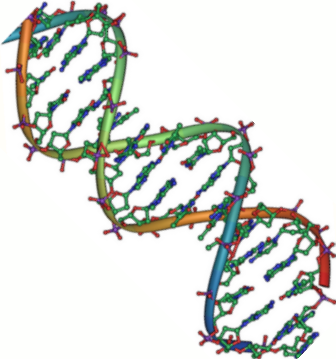
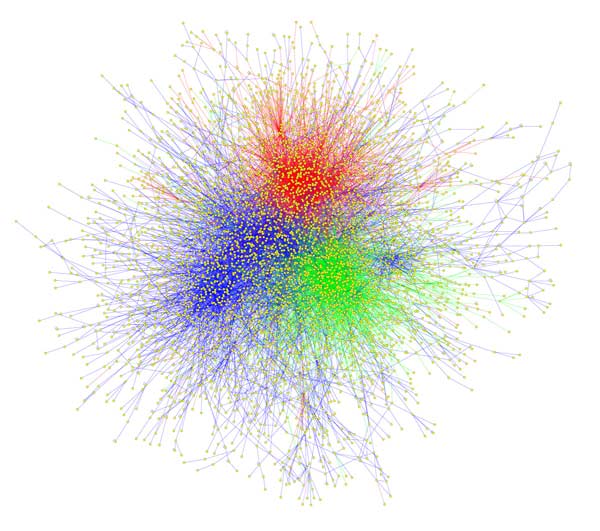
A culture's icons are a window onto its soul. Few would disagree that, in the culture of molecular biology that dominated much of the life sciences for the last third of the 20th century, the dominant icon was the double helix.

In the present, post-modern, 'systems biology' era, however, it is, arguably, the hairball.

| www.flickr.com |
Jag heter Erik Stattin och det här är min blogg. Jag skriver om digital kultur, ungefär. Du får gärna tipsa mig om saker. Kontakta mig på erik.stattin@gmail.com. Jag är mymarkup på Twitter och Delicious.
